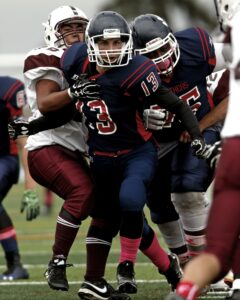Will Arch Manning Ever Start at University of Texas?

The situation surrounding Arch Manning’s playing time at the University of Texas has garnered significant attention. Arch Manning, a top recruit for the Texas Longhorns and the nephew of NFL legends Peyton and Eli Manning, has been the subject of much discussion among fans and analysts alike.

Table of Contents
Maalik Murphy’s Rise
The Statesman article focuses on Maalik Murphy, who recently won the backup quarterback position over Arch Manning. Murphy is a physically imposing player, standing at 6-foot-5 and weighing 238 pounds. He has a powerful arm and has been praised for his arm strength by former NFL quarterback Robert Griffin III. Despite rumors that he might transfer after Arch Manning’s commitment to Texas, Murphy chose to stay, showing his commitment to the team and its culture.
Fan Reactions
Fans have expressed their dissatisfaction with Arch Manning’s lack of playing time. During a game against Rice, where Texas secured a 37-10 win, Manning was seen warming up but never made it onto the field. This led to a flurry of social media reactions, with fans questioning the coaching decisions and even suggesting that Manning should transfer to another school where his talents would be better appreciated.
The Coaching Dilemma
Texas Longhorns’ head coach Steve Sarkisian has been tight-lipped about his plans for Arch Manning. The competition for the backup quarterback position was intense, and Sarkisian gave no hints before the season opener. This has led to confusion among fans, who expected to see Manning play, especially in games where Texas had a comfortable lead.
The Future
Arch Manning is considered one of the highest-rated recruits in college football history. The expectations are high, and the pressure is on both Manning and the coaching staff to make the right decisions. While Manning may be third on the depth chart for now, the dynamics could change quickly, especially in the unpredictable world of college football.
The Bigger Picture
The situation also reflects broader trends in college football, where top recruits often have to compete for playing time and where the transfer portal has become an increasingly common option for players seeking better opportunities. It raises questions about how teams should manage young talent and how players should navigate the complex landscape of college football to advance their careers.
Conclusion
The Arch Manning saga is a microcosm of the challenges and opportunities in modern college football. It involves a mix of talent, expectations, fan reactions, and coaching decisions, all set against the backdrop of a sport that is as unpredictable as it is passionately followed. As the season progresses, it will be interesting to see how the situation unfolds, what decisions are made by the coaching staff, and how Arch Manning’s college career takes shape.




